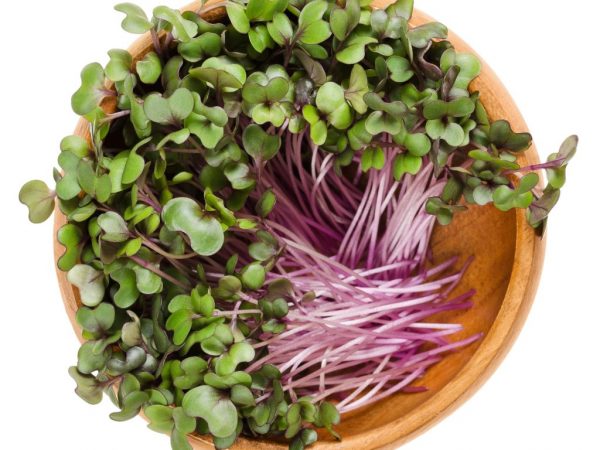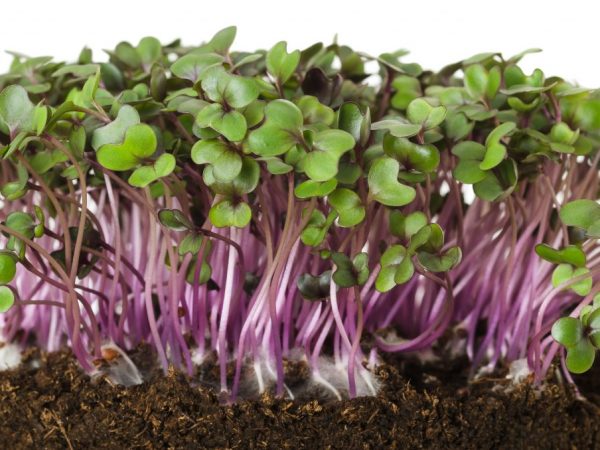How to grow red cabbage seedlings
Seedlings of red cabbage will grow strong and healthy if you know and follow the basic rules of its cultivation. The culture has many advantages, since it is considered unpretentious to care for, easily tolerates heat and frost, and is not very susceptible to diseases.

Growing red cabbage seedlings
How to plant seedlings
In the process of growing red cabbage seedlings, a certain sequence of work is observed.
The timing of the formation of the ovary of this plant varies from 150 to 200 days. This indicator depends entirely on the variety and type of plant. An early head will ripen faster than a late one, even if the seeds are sown on the same day.
All seedlings are ready for transplanting at about the same age, which is why it is important not to miss the moment when the seeds need to be planted in the ground.
Soil preparation
The ideal time to sow seeds for seedlings is the end of February. In order to have time to carry out the work on time, at the beginning of the month you should take care of the soil in the greenhouses, as well as fill the containers for growing seedlings on the windowsills.
The soil for sowing seeds of a red-headed vegetable should be:
- Warm. This requirement can be fulfilled with the help of warm beds. You can also warm up the ground in a room where the air temperature is not lower than 20 ° C.
- Saturated with nitrogen fertilizers. Before planting the seeds, the main soil is mixed with peat or humus.
- Treated ash. This action helps avoid cruciferous flea infestations.
The day before the intended sowing, the prepared soil is watered with a weak solution of potassium permanganate. This technique will disinfect the soil and saturate it with missing microelements.
Seed selection
The selection of seed material for forcing seedlings is carried out in 2 stages. During the first, a visual inspection is carried out, and then burst, blackened and small grains are discarded.
The second stage of seed preparation involves a hardening procedure. It goes like this:
- The sorted seeds are placed in a glass jar and filled with hot water (50 ° C). The beans should be kept in the jar until the water has cooled to room temperature.
- After the time has elapsed, the water is drained, and the seeds are wrapped in dry gauze and sent to the refrigerator for 3 hours.
The grains prepared in this way are sown in warm soil.
This stressful technique has worked well with many other cruciferous plants. Thanks to its use, the germination of seeds increases and the yield increases, since there are no barren flowers among the plants.
The effectiveness of the method is also confirmed by breeders specializing in the cultivation of various types of this vegetable.
Sowing and germination
Sowing seeds in greenhouses is done manually. The distance between the seeds should be at least 4 cm. Even if some seedlings are sick, they can be removed without damaging the root system of the neighboring ones. The row spacing should be 15 cm.The sowing depth of red cabbage seeds should not exceed 1 cm. Until the time of germination, the room should be kept at room temperature.
On the street and indoors, containers are insulated with agrofibre or oilcloth. The latter will create a steam effect, due to which the seeds hatch a day earlier. After the first leaf appears on the surface of the earth, a gradual decrease in temperature begins.
After about 2 weeks, the seedlings already have one full-fledged leaf each. At this time, the air in the room should not be higher than 15 ° C. In hotter rooms, cabbage becomes thinner.
Care features

Seedlings need good lighting
Cabbage belongs to light-loving plants, which is why the seedlings need light. With a lack of natural light, the seedlings are illuminated. If this is not done, the seedlings will grow thin. They will also have a weak root system.
Red cabbage, like any other variety of this vegetable, requires regular watering. Be sure to make sure that the soil in greenhouses and greenhouses with seedlings is not excessively wet. Failure to comply with the rules leads to:
- root rot;
- withering away of leaves;
- the development of bacterial diseases.
Excess moisture attracts slugs and snails, which can turn seedlings into a pile of lifeless leaves in a few hours.
As the plants grow, they are sprinkled with dry, loose earth. This allows the seedlings to form a healthy root system.
Red cabbage seedlings are ready for transplantation to a permanent place at the age of 45 days. By this time, each healthy plant has 6 leaves and the rudiments of the future fork are visible.
Red cabbage varieties
The red-headed vegetable differs in ripening time. Separate early, middle and late plant varieties.
In the middle lane, the following varieties and hybrids give the best yield:
- Early ripening: Topaz, Early Beauty, Nurima F1.
- Mid-season: Stone Head-447, Anthracite F1, Vanguard F1.
- Mid-late: Mars.
- Late ripening: Late beauty, Pallet.
All these varieties of cabbage are distinguished by their high taste, excellent keeping quality and density of the forks.
Conclusion
Red cabbage is grown by seedling and seed methods. The choice of method does not greatly affect the final result, but when sowing in the holes, you will have to spend more time on maintenance, as well as sow more seeds.
Growing red cabbage seedlings will not take much time for those who pay attention to the intricacies of sowing, and will also properly care for the seedlings.


